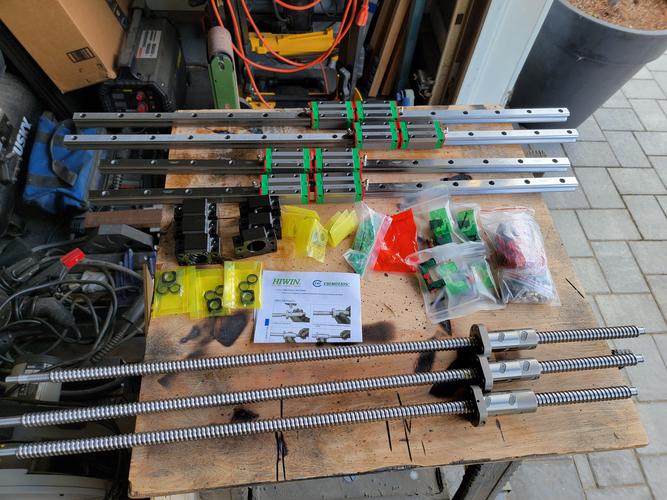Top 5 Roller Bearings for Construction Equipment: Types, Applications, and Maintenance Tips
Roller bearings are critical components in construction equipment, designed to handle heavy radial and axial loads while ensuring smooth operation. These specialized bearings enhance machinery durability, reduce friction, and improve energy efficiency in demanding environments like excavation, material handling, and earthmoving applications.
1、Types of Roller Bearings Used in Construction Machinery2、How to Maintain Roller Bearings in Heavy Equipment
3、Best Practices for Lubricating Construction Equipment Bearings
4、Signs of Worn-Out Roller Bearings in Excavators
5、Comparing Tapered vs Spherical Roller Bearings for Cranes
1、Types of Roller Bearings Used in Construction Machinery

Construction equipment utilizes various roller bearing types to meet specific operational demands. Cylindrical roller bearings excel in high-radial load applications like crane booms, while tapered roller bearings handle combined loads in wheel hubs. Spherical roller bearings compensate for shaft misalignment in vibrating compactors. Needle roller bearings provide compact solutions for limited-space applications. Each type features unique geometries and material treatments to withstand extreme pressures, contamination, and temperature fluctuations common on construction sites.
2、How to Maintain Roller Bearings in Heavy Equipment
Proper maintenance extends roller bearing lifespan in construction machinery. Implement scheduled inspections using vibration analysis tools to detect early wear patterns. Establish contamination control protocols with effective sealing systems and regular housing cleanings. Maintain proper lubrication intervals using high-viscosity greases containing EP additives. Monitor operational temperatures through infrared thermography, ensuring bearings operate within manufacturer-specified ranges. Always use proper tools during installation to prevent brinelling damage.
3、Best Practices for Lubricating Construction Equipment Bearings
Effective lubrication is crucial for construction equipment bearings. Select grease with NLGI consistency grades matching operating temperatures. Implement automatic lubrication systems for hard-to-reach bearings. Calculate relubrication intervals using formula: Interval(hours) = (k × 14,000,000)/(n × d^0.5). Consider synthetic lubricants for extreme temperature applications. Always purge old grease completely during relubrication to prevent additive incompatibility. Monitor lubricant condition through regular oil analysis for particle contamination and viscosity changes.
4、Signs of Worn-Out Roller Bearings in Excavators
Recognizing bearing failure symptoms prevents catastrophic equipment damage. Common indicators include abnormal noises (grinding or rumbling), excessive heat generation, and increased vibration levels. Visually inspect for flaking, pitting, or discolored raceways. Check for axial play exceeding 0.002 inches per inch of bearing bore. Monitor hydraulic system pressure fluctuations that may indicate bearing-related resistance. Implement predictive maintenance strategies using ultrasound detection for early fault identification.
5、Comparing Tapered vs Spherical Roller Bearings for Cranes
Crane applications require careful bearing selection. Tapered roller bearings offer precise axial load control in hoisting mechanisms, while spherical roller bearings accommodate misalignment in rotating assemblies. Compare dynamic load ratings: spherical bearings typically handle 20-30% higher radial loads. Tapered designs provide better axial stiffness for precise positioning. Consider lubrication requirements - spherical bearings often need more frequent greasing. Evaluate replacement costs and maintenance accessibility during selection.
Understanding roller bearing fundamentals directly impacts construction equipment reliability and operational costs. From selecting appropriate bearing types to implementing proactive maintenance strategies, each aspect contributes to machinery longevity. The following sections delve deeper into critical considerations including lubrication techniques, failure diagnosis, and comparative analyses between bearing configurations. Discover how proper bearing management can reduce downtime by up to 40% in heavy construction applications.
Optimizing roller bearing performance requires comprehensive knowledge of mechanical properties, application requirements, and maintenance protocols. By implementing the strategies outlined for bearing selection, lubrication management, and condition monitoring, construction companies can significantly enhance equipment reliability. Regular training for maintenance teams and adherence to manufacturer specifications remain crucial for maximizing bearing service life in demanding operational environments.




 13869596835
13869596835